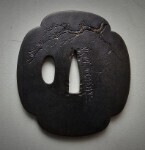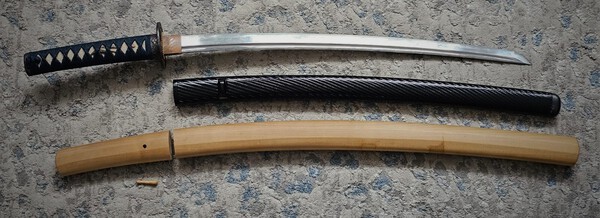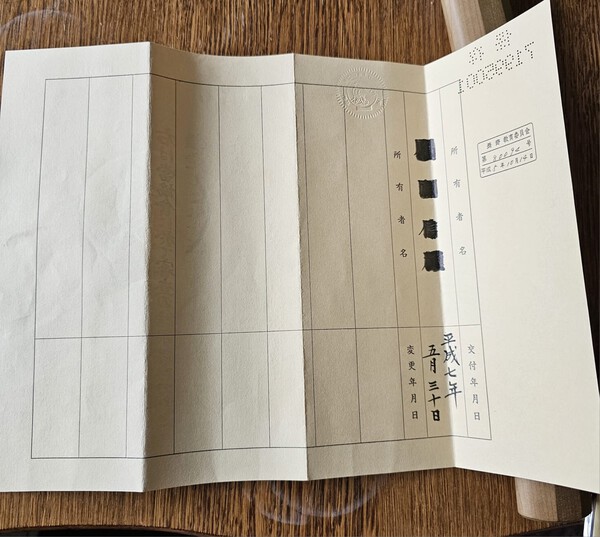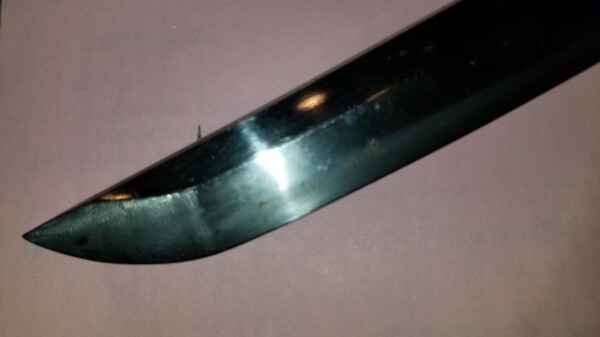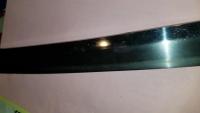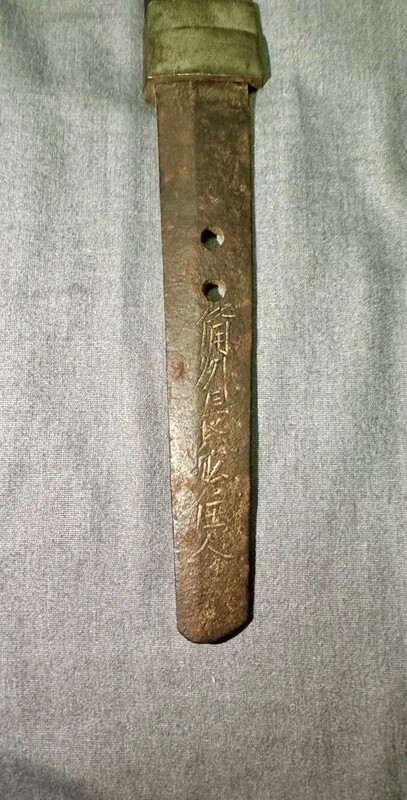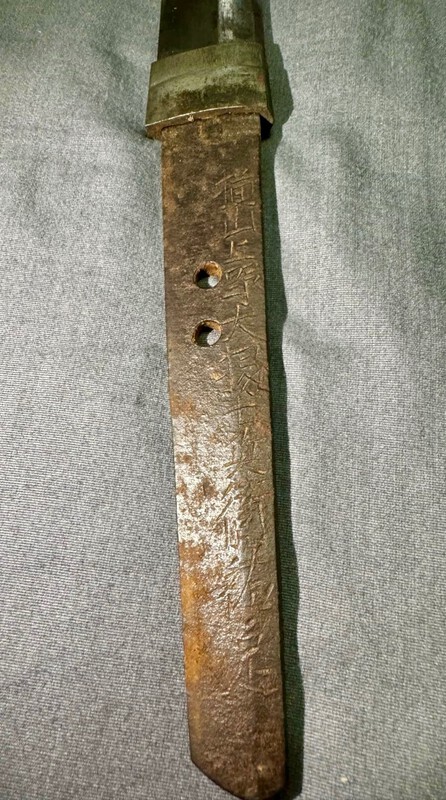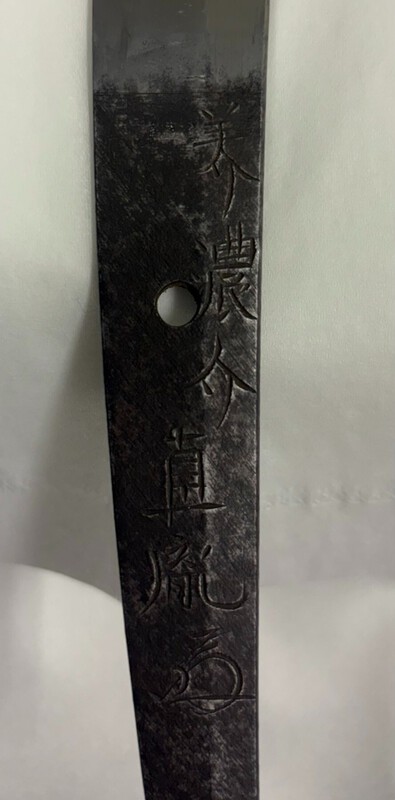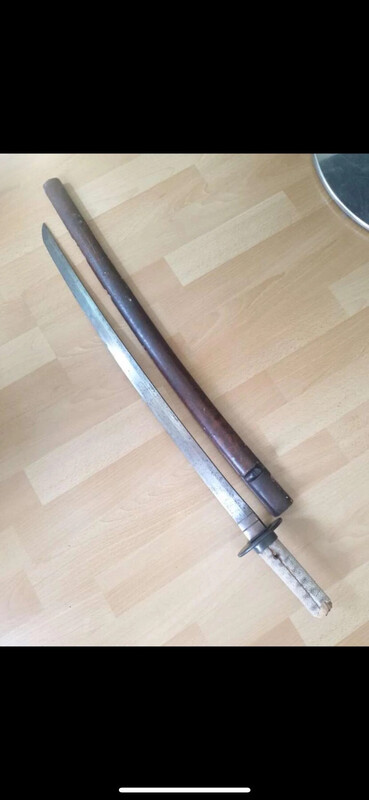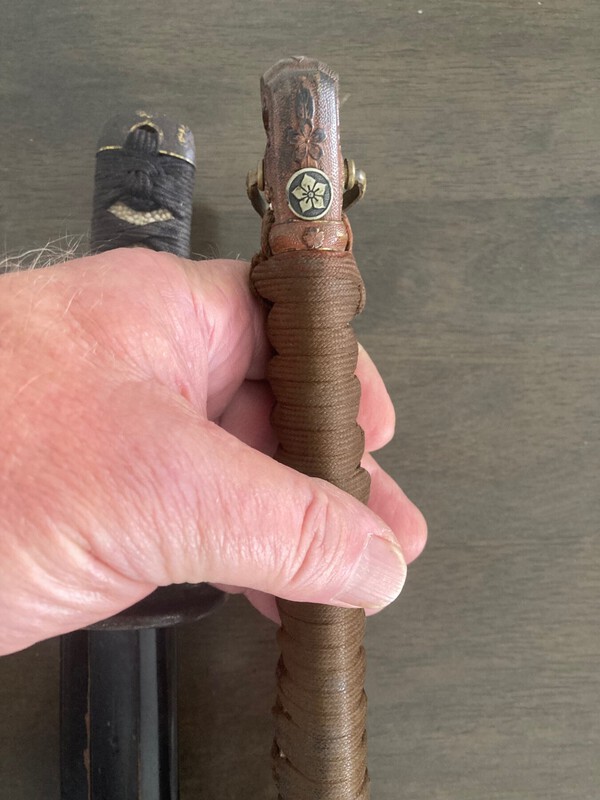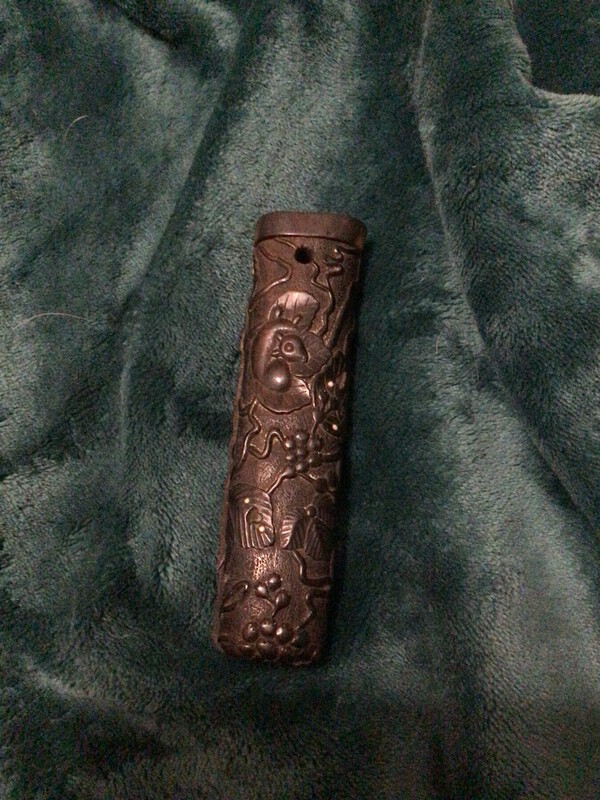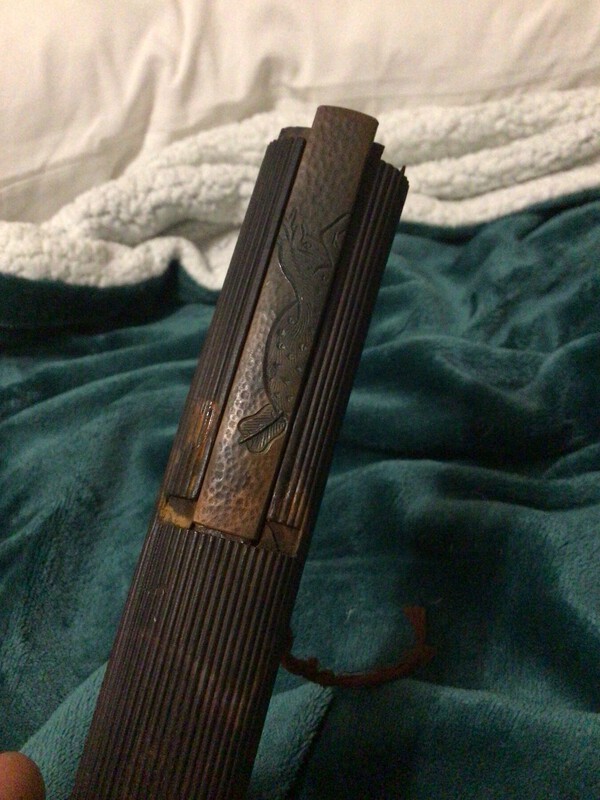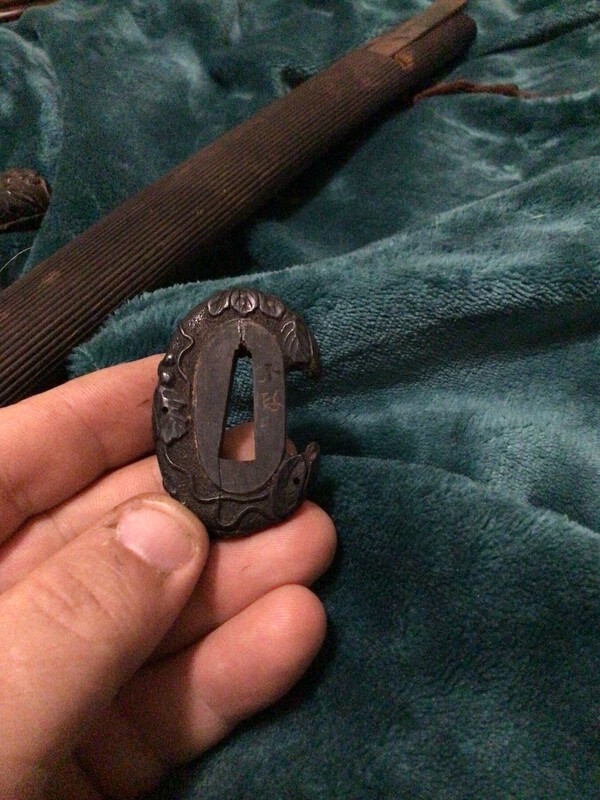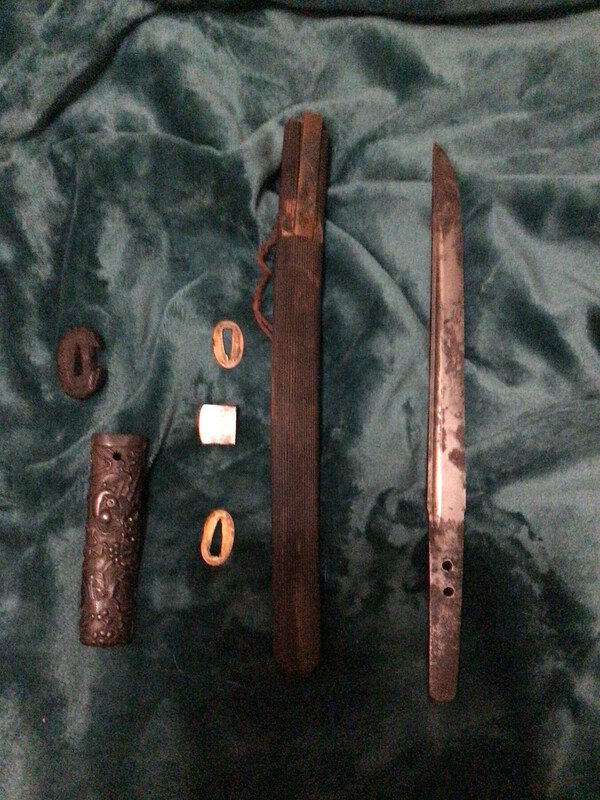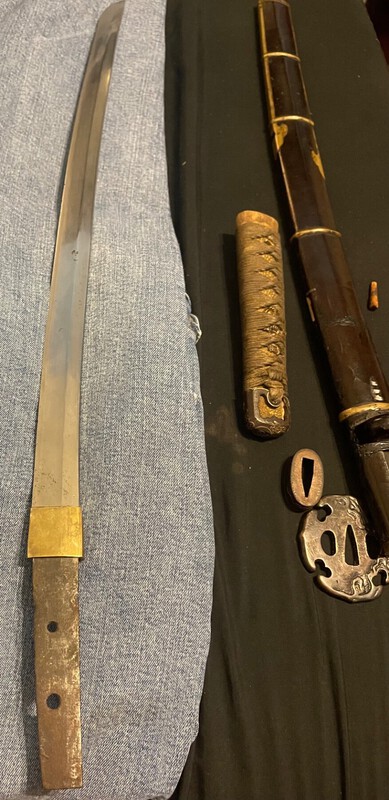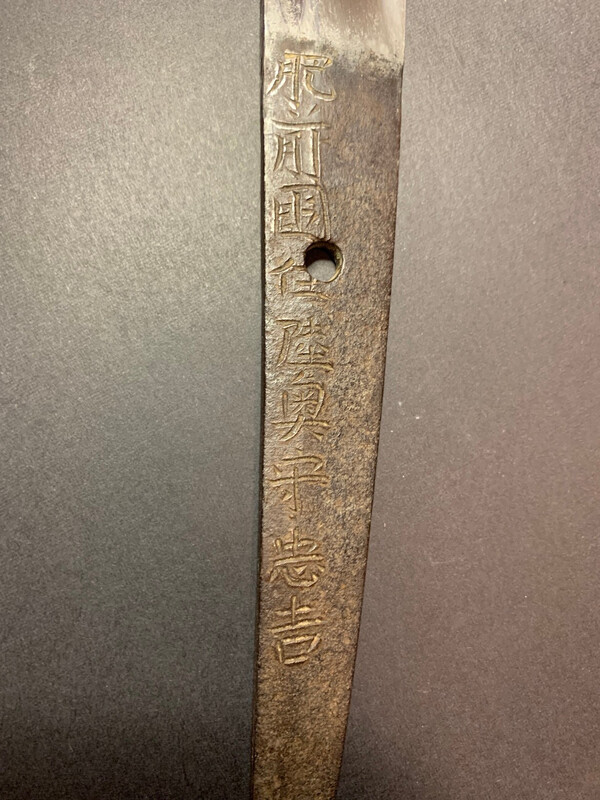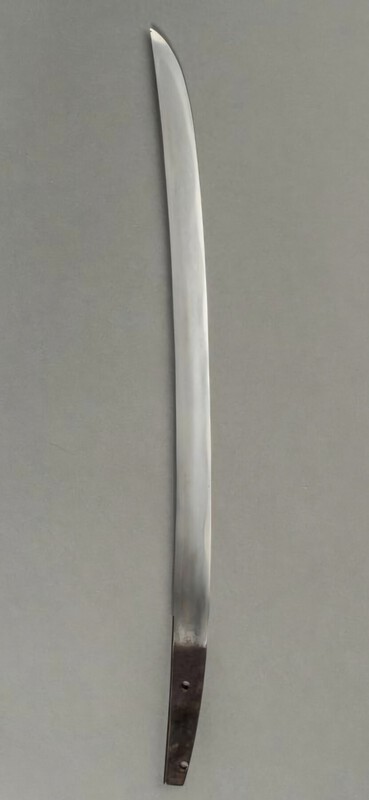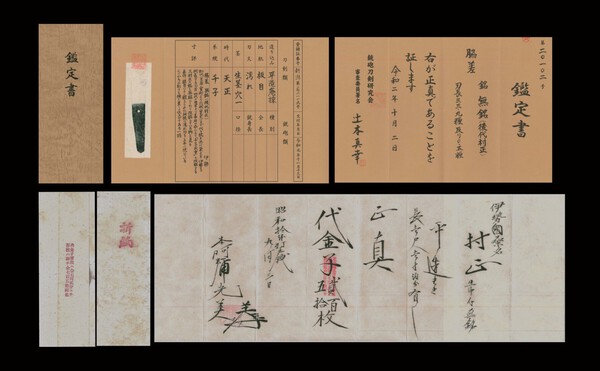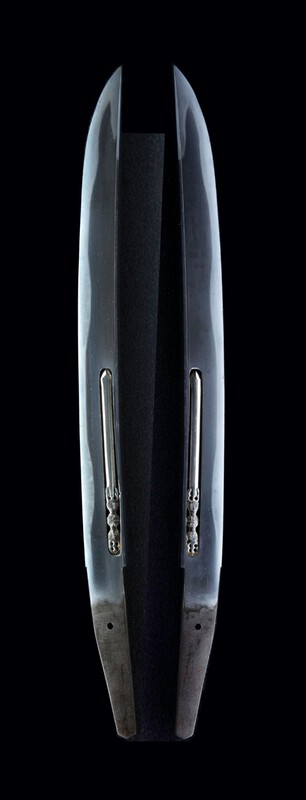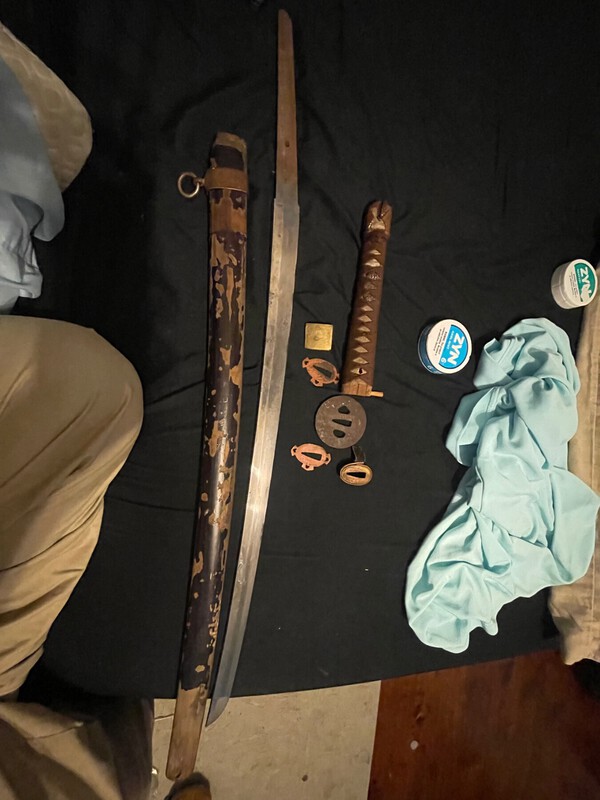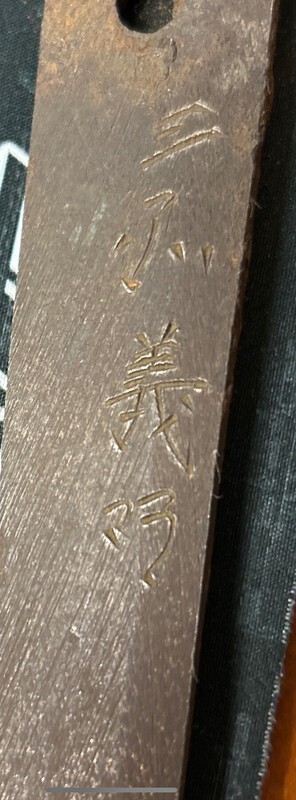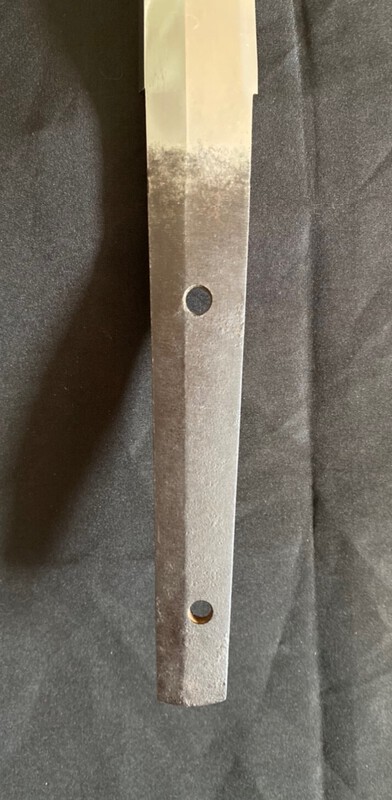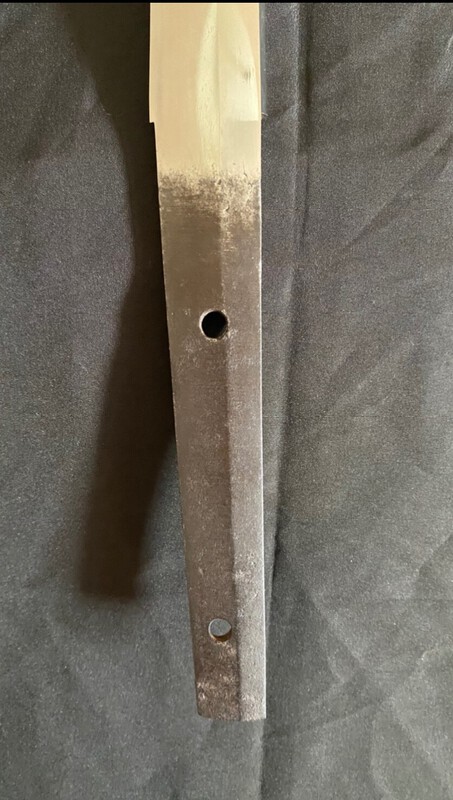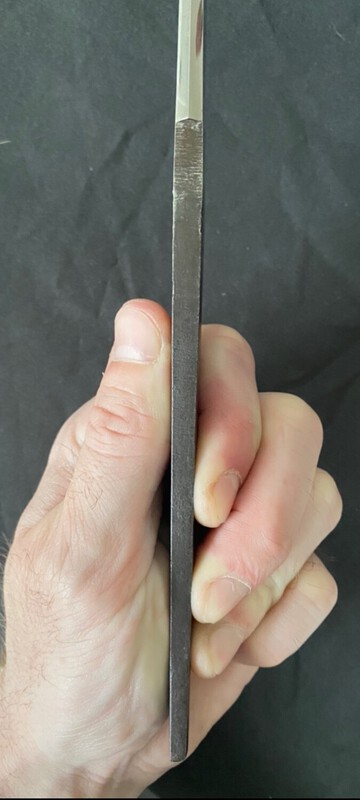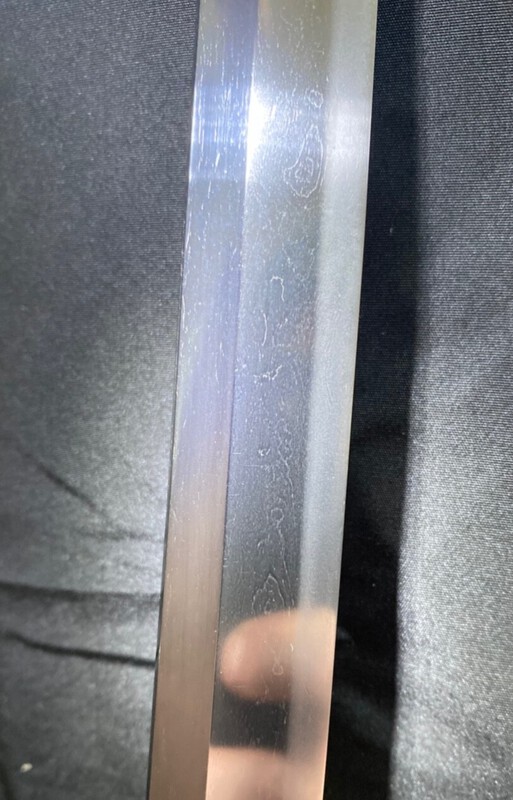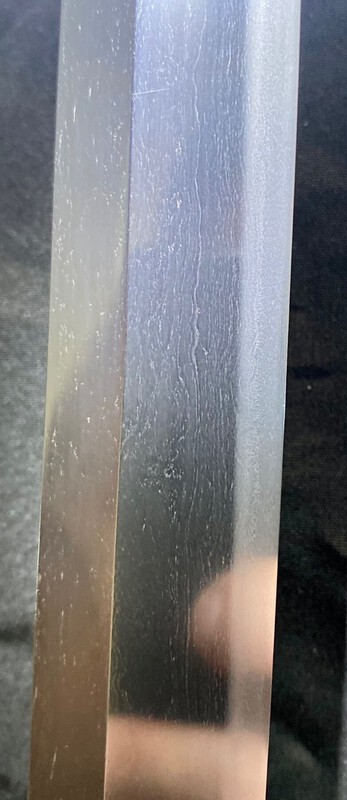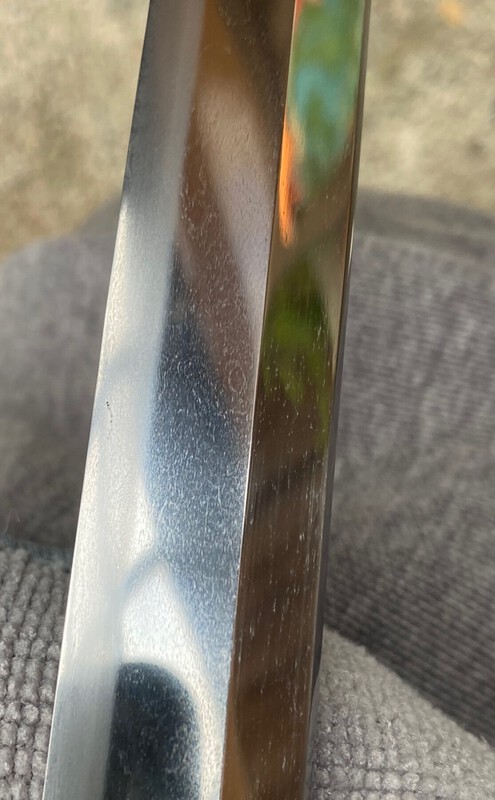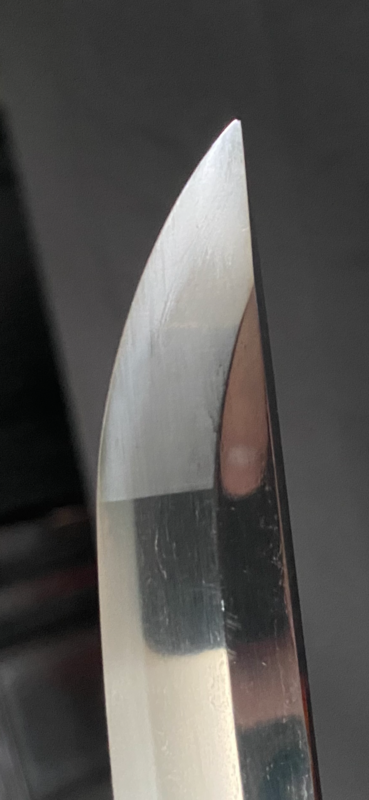Search the Community
Showing results for tags 'wakizashi'.
-
Type: Wakizashi Ubu, Suriage or O-Suriage : Ubu Mei : (Mumei, Signature) : Bizen Ju (?Mitsu?) Papered or not and by whom? : Not Era/Age : Koto/Muromachi (~1500) Shirasaya, Koshirae or Bare Blade? : Koshirae + Shirasaya Nagasa: 49.7 cm. Sori: 1.5 cm. Moto-haba: 2.7 cm. Saki-haba: 1.7 cm. Moto-gasane: 0.7 cm. Saki-gasane: 0.5 cm. Flaws : Old hadaware fix (please check pictures) Sword Location : Poland EU Will ship to : Anywhere Payment Methods Accepted : Bank2bank wire-transfer (USD) Price and Currency : 2650$ + shipment costs. Other Info and Full Description : Hi, I'm looking to sell my Koto Bizen Osafune Wakizashi. Decent polish and very good (IMHO) overall condition. It comes with beautiful Koshirae (renovated, Fuchi/Kashira/Menuki/Tsuba/Kojiri are from early Edo period). If you are interested, please ask and I will do my best to answer. I can also post additional pictures or videos if needed. My asking price is equal to what I have paid, no earnings here.
-
Hello NMB! As always I'm looking forward to see your valuable comments. Please let me know what you think about this sword. What can you tell me about smith? Is my Mei translation correct (Fujiwara Kunitsugu)? And especially, what is that note on revers of NBTHK certificate? First time I see this. Why were some Kanji 'hidden' (still readable I think)? Please advise, thanks!
-
Hi, i tried to translate it but no hope. All I got is 平盛国. Any information on this Nihonto ? https://ibb.co/4RMJJDm1 https://ibb.co/MD1tf3Yt https://ibb.co/MDxPrwHn https://ibb.co/CKfHdSft
-
I am trying to date this blade. I can't figure out which Kuniyuki made it. I am also trying to figure out if it is worth the money to do a full polish and mount. Please help. I am new on here so bare with me.
-
A friend recently got this wakizashi in a bulk purchase, and I helped walk him through getting the tsuka off. He sent me these photos and would love to learn more about it. Cheers, -Sam
-
Hi all, I need your expertise/opinions on the following nakago, whether real or fake. The blades have a certificate but as you know papers can be forged. Katana (.heic files): Katana - Google Drive Wakizashi (.heic): Wakizashi - Google Drive Certificate (.heic): Chiba 10078-10079 - Google Drive What worries me is Naotane's monogram on the katana, the way mekugi ana takes a portion of it. What do you think? I've found some examples on genuine meis but it look Naotance modified his signature over the years. I am attaching the jpg version of the pictures.
-
Hi, I bought this nihonto last year from an estate in Vienna/Austria. The old owner died and unfortunately if he had papers, they are gone. What age and school could it be?I am wondering what thype of Nihonto it is? Someone said it is possible a Katateuchi. It is too long for a wakizashi and the nakago is too short for a Katana. What style and school of Koshirae is it (beside the fact that the Koshirae in which is was is in very bad shape). Nagasa is 60,6cm long and Nakago about 14cm. In the following google drive link are more pictures. https://drive.google...rj_DaQ3w?usp=sharing Hope you can help me
-
Hello, For a bit of context, I'm studying a naginata naoshi wakizashi. On the description of the wakizashi written in 1981, we can read : "kanmuri otoshi shape, unsigned, one mekugi-ana, 16th century. Iron guard with a character and a horse. Nagato ? " That's why I would want to know more about Nagato-Sa. Was previously owned by a french anthropologist. I was wondering about the Nagato-Sa school features as I have trouble finding any good online ressource on it. I was mainly wondering two things : - do the nagato-sa smiths also forged naginata ? I saw they mainly forged tanto - were they still active in the 16th century ? I saw some smiths related to nagato-sa school working in the 16th century but I'm unsure about this source. Considering this one is probably a naginata naoshi, would it be possible for the blade to be older ? I'm quite unsure about the datation affiliated to this wakizashi. I found this genealogy online following this URL : https://www.sho-shin.com/sanyo24.htm You'll find two pics of the blade, omote and ura. I'm curious about your thoughts on it ! Motokasane : 4.5 mm Motohaba : 2.6 cm Sori : 8 mm At its thinest, kasane is between 0.5 and 1 cm. Mihaba at its largest in the second part of the blade, just before kissaki is also 2.6 cm
-
Wakizashi - Mumei attributed to Shitahara Length: 54.3 cm (1.79 Shaku) Sori: 1.7 cm Motohaba: 2.9 cm Sakihaba: 2.0 cm Moto-kasane: 7.5 mm Description: Shitahara from the late Muromachi period. The blade is in immaculate condition without any hint of reshaping. It is Ubu and unsigned. Jigane is itame mixed with mokume, ji-nie and chikei present. Hamon is wide suguha style gunome with slight notare. Activities in the hamon includes hotsure, kuichigai-ba, ko-ashi, yō, kinsuji, and sunagashi. Additional photos: https://1drv.ms/f/c/...azhk4Ne9b7A?e=eNUqqc Asking for $950 USD or best offer + free shipping between USA and Canada. Will have to ship with private couriers due to Canada Post on strike (e.g. FedEx, UPS, Purolator).
-
Type (Tachi, Katana, Wakizashi, Tanto, Naginata, Other) : Wakizashi Ubu, Suriage or O-Suriage : Mei : (Mumei, Signature) : Papered or not and by whom? : Not Era/Age : 1800's Shirasaya, Koshirae or Bare Blade? : Shirasaya Nagasa/Blade Length : 15" Sori : .3" Hamon Type : Straight Jihada : Other Hataraki Visible : Flaws : Needs polish Sword Location : Calgary, AB, Canada Will ship to : USA Payment Methods Accepted : Paypal Price and Currency : $2500.00 CDN (not firm, negotiable) Other Info and Full Description : Boys Day Wakizashi, Signed Yuki Hide. From the 1850's. Unknown which Yuki Hide it was. Blade length is 39cm (15") Whole 62cm (24.5") Curvature 10mm (.3") Weighs 588gr Please note, I am not a seller nor collector. I have limited knowledge. Other photos can be provided upon request. Thank you everyone.
-
Hello. I need your help to translate the following signatures into a tan to that I believe is Gassan and into a wakisashi that I cannot understand. Thank you very much for your time. Regards
-
-
My father passed away recently% growing up I always loved his collection of things especially his Japanese swords. I took this wakizashi apart. I do not know much of these things but I’m trying to get more educated so any help would greatly be appreciated. I also have 2 katanas but I didn’t want to post it all on one topic. I know it’s in rough shape.
-
-
I posted this sword a few days ago, but now I received it and made more photos. What do you think about it? I got it for 550 USD including shipping to Europe. It got a few imperfections, but for this price point I expected it. I know its a very likely a gimei and not from the 3rd generation, but is it a tadayoshi school blade nevertheless? Are the shape of the blade, hamon and kissaki in the style of the tadayoshi school. Pictures are in the Google Drive link: https://drive.google...Yerx0?usp=drive_link How do you like the habaki and shirasaya? I think they pretty high quality for the price. I would be happy if you answer my post.
-
I have more photos. Much more detail it just won’t let me upload all. These are interesting, the katana has a material in the handle that’s not stingray. And very interesting damage on the blade . The smaller sword is so detailed pics can’t do it justice. Any help identifying is appreciated. Both are signed.
-
Can someone please help me to translate the mei. Supposedly it is saying: Hizen no kuni Mutsu no kami Tadayoshi Is the mei legit or a gimei. Does somebody know more about the smith or the sword? The sword does not have papers unfortunately. I would be happy to get some answers.
-
First, I apologize for the poor quality pictures. I'm looking for any information that can be shared. I'm a total noob, at best. Dated to be made ca early 1500. From a private collection in Europe. Unsigned. Has a sticker on it that says muramasa I think? Worth 400 usd? Have great weekend Thanks a bunch Lukas
-
While studying Muramasa blades, I recently came across a blade on a Japanese sword auction site (no, not Yahoo Auctions, Aucfree, or anything similar) with JTK paperwork attributing the sword to later generation Muramasa with an age around the Tensho era of Japan. I'm familiar with Tensho Muramasa (sandai), but I am unfamiliar with the reliability of the JTK. Can anyone give any insight on the validity of the blade? THe blade does appear to have tanago-jiri nakago, alongside an o-notare nioiguchi, but I lack knowledge on Muramasa's horimono, alongside the difference between Tensho Muramasa and Sengo Masashige. Any help would be much appreciated! Sincerely, Zoglet PS- If substantiated by the details, please don't snatch up the sword. Finders keepers, and this looks like a stunning blade to me (my partner happens to also love the blade's appearance)
-
-
Hello All! I’m new to this forum, I was referred by a fellow member of gunboards. I was wondering anyone would be able to help me get some more information and history on some swords I own. The shin gunto I bought from an English WW2 vet’s son, he told me his father brought it back from Burma. The wakizashi I found in an online estate auction from another vet a few years ago. Both swords are signed. The nice fellow who referred me told me the Tsuba on the gunto was a Gunzoku Tsuba. From what I can tell by Googling it was a civil branch of the military? He also said the sword was refitted for WW2. I’ve attached some photos of the swords, their tangs, and the Tsuba of the Wakizashi. Thank you so much, any insight would be helpful. -Evan
-
First of all, I like this sword. It checks many of my boxes. It reminds me of another wakizashi that I’m having professionally restored. It’s unpapered and mumei. I think KOTO and suriage. I’m getting Yamato vibes. Am I just seeing what I want to see, or am I on the right track? Nagasa: 51cm (20.2inch) Motohaba: 2.7cm Sakihaba: 1.75cm Kissaki length: 3.2cm Still working on photography. I need a lighting rig. Light and reflections seemed to be battling me on this one. It’s easier to admire and looks better in-hand. Cheers, -Sam
-
Howdy y'all, names crusader! I may have missed where to put it but I didn't seem an introduction area so I'll put it here. I'm a newbie wanting to get into collecting nihontos, and so I figured I'd join here! I know a bit about the blades and I'm still reading up on them, and I'm slowly saving for my first antique, which I'm hoping to eventually get a edo period or earlier blade. I hope we can get along and God bless.
-
Hi everyone, I could do with some assistance with this one particular piece. A few months ago I received a wakizashi in shirasaya as a gift, but I've had much trouble trying to figure it out with my available resources. Blade seems to be an O-suriage with possible Machi-Okuri, no visible hamon and a bad polishing attempt to boot. First Kanji seems to be "Kane" While Second Kanji is cut by half, so it could be either "taka" or "Yoshi" to my speculation Does anybody have any idea which one this may be? Any assistance or thoughts would be much appreciated.

